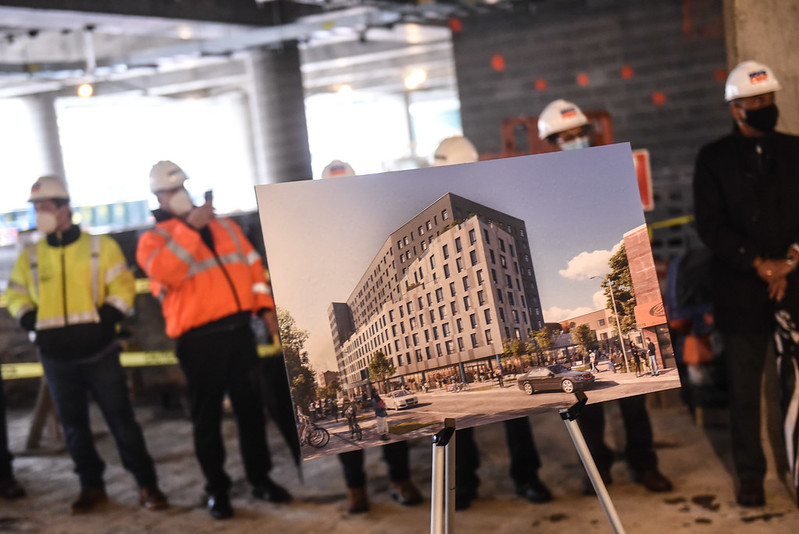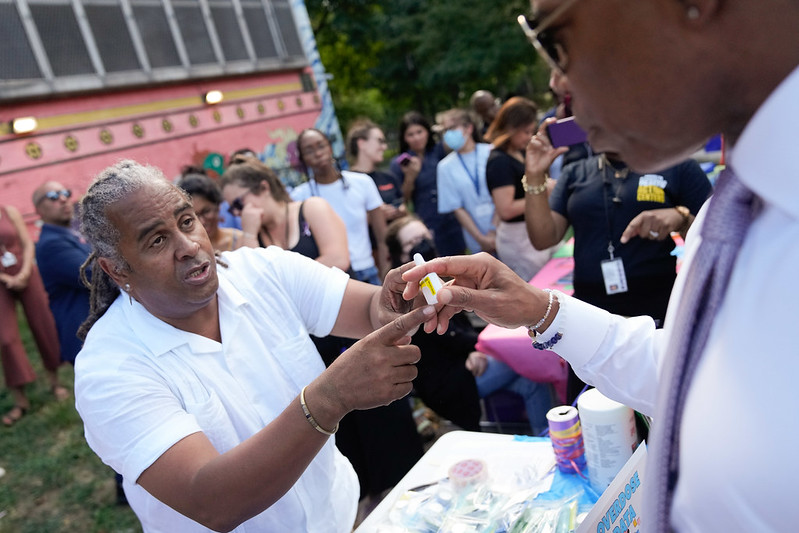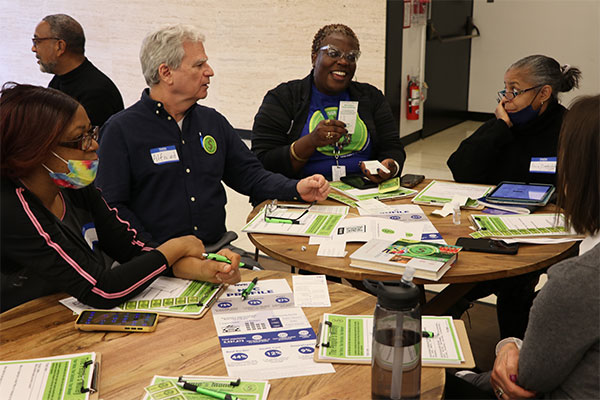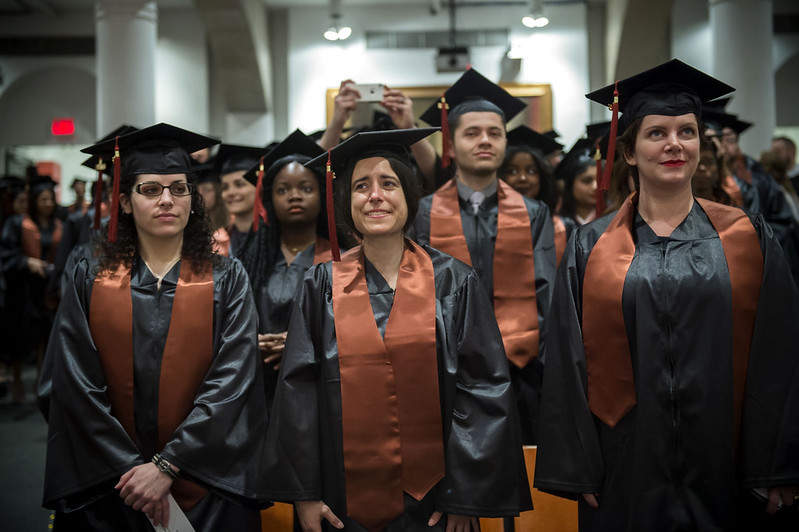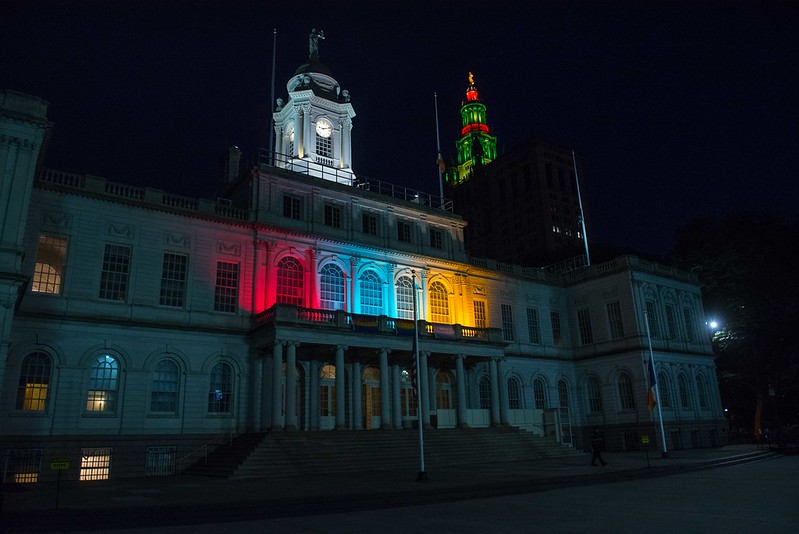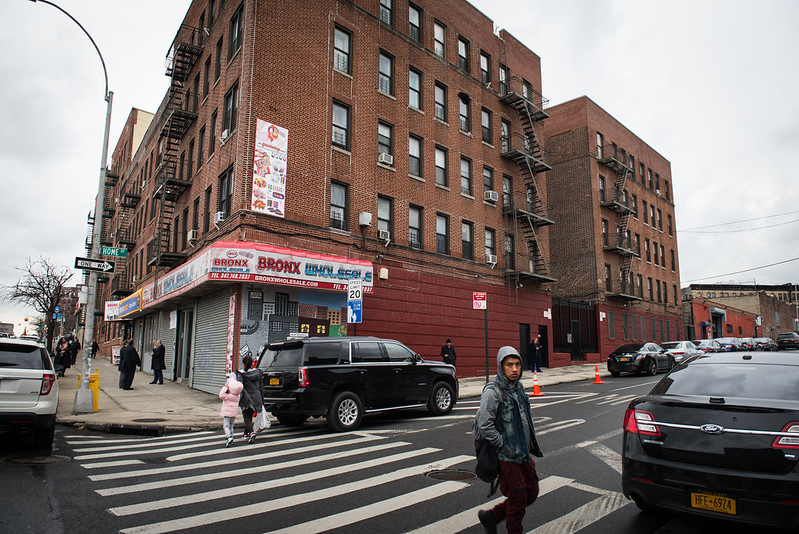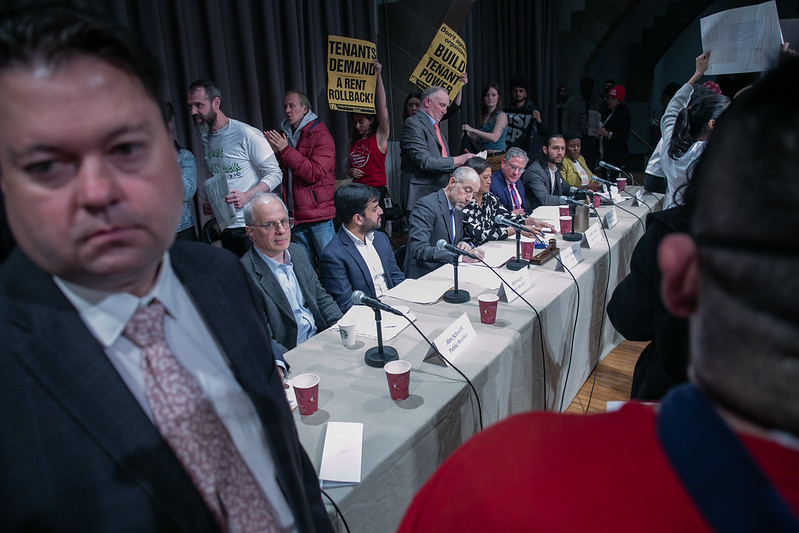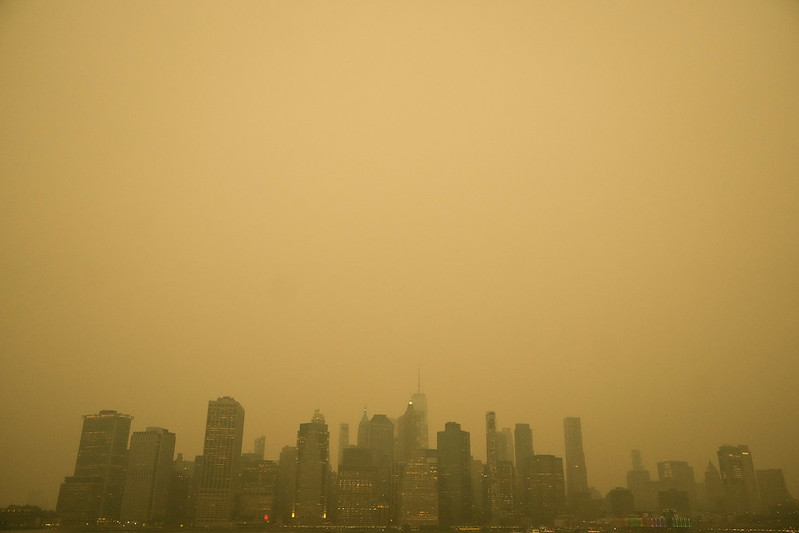
Wildfire smoke upon New York City (photo: Michael Appleton/Mayor's Office)
There is an old expression: “Opportunities are like sunrises. If you wait too long, you miss them.” As someone who has lived in and around public housing in Western Queens for more than 40 years and has dedicated my life’s work to this special community, we have lived through a very long night, but now we can sense the sunrise, and we are determined not to miss it.
The recent unhealthy air from the smoke of Canadian wildfires have given all New Yorkers a taste of what Western Queens residents have long experienced.
For decades, our communities have lived in the shadows of fossil fuel power plants. These plants, along with other nearby industrial activity, have darkened our skies and poisoned the lungs of thousands of residents who live in public housing developments disproportionately clustered around these noxious polluting facilities.
In the ongoing battle against climate change, the dangerous combination of fossil fuel emissions and wildfires that we have just witnessed has emerged as a formidable threat to public health, particularly in marginalized communities.
I co-founded Urban Upbound with the mission to break cycles of poverty in public housing communities by bringing people together to solve multi-faceted problems ranging from community health to jobs to revitalizations. I know better than most how rare it is to build an alliance that spans community leaders to labor to business, all together behind a comprehensive solution.
The time for urgent action, equity, and environmental justice has never been more pressing — that is why the Renewable Ravenswood and the Attentive Energy One offshore wind projects are critical measures, and state leaders must make sure we don’t miss this opportunity.
Renewable Ravenswood will be the largest environmental justice project in our state’s history. It charts a path to transform Ravenswood Generating Station — New York City’s largest fossil fuel power plant — to a state-of-the-art clean energy hub, even resulting in the ultimate shutdown of “Big Allis,” once the largest generator in the world. If you’ve ever spotted the massive smokestacks towering over the neighborhood from the Queensboro Bridge or the N Train, you’ll understand how big of a deal this would be.
The first step in this transformative vision is the proposed Attentive Energy One offshore wind project. By connecting an offshore wind farm to Ravenswood, we will see the retirement of one of Ravenswood’s 1960s-era fossil fuel generators – not just in our lifetime, but in the next decade.
This project would make massive investments in our community, creating good-paying jobs while reducing carbon dioxide emissions equivalent to removing 13% of cars off New York City streets. The project would stabilize energy costs at a time when high electricity bills continue to impact working families and would leverage Ravenswood’s existing energy infrastructure and workforce to reduce construction costs while preserving good-paying union jobs.
The retirement of local fossil fuel infrastructure powered by clean energy is important enough that President Joe Biden’s Secretary of Energy, Jennifer Granholm, visited Ravenswood this Spring saying this project is “a fantastic story of transformation” and “an example of what could happen all across the nation.” Importantly, this plan is the product of bottom-up conversations with the community on solutions to uplift us. Between years of transparent engagement by Rise Light & Power, NYCHA residents’ inclusion in Secretary Granholm’s visit, and upcoming community forums, this project has the full backing of the community and we are ready to see it happen.
This is the moment where all New Yorkers can understand the importance of breathing clean air and seeing a bright sunrise.
There is little New Yorkers can do to stop raging wildfires, but our leaders can take immediate action now to help Western Queens and New York City breathe easier by supporting Attentive Energy One -- the clear gateway to clean air for Western Queens and better opportunities for everyone in our community who has lived in the shadow of neglect for far too long.
***
Bishop Mitchell G. Taylor is the CEO and co-founder of Urban Upbound.
***
Have an op-ed idea or submission for Gotham Gazette? Email This email address is being protected from spambots. You need JavaScript enabled to view it.
